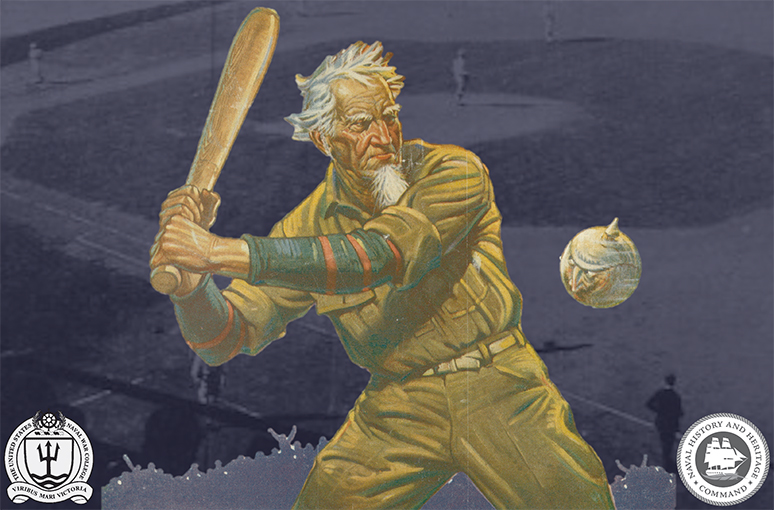U.S. Naval War College Third Annual “Cardines Classic” Army-Navy Baseball Game

About this Event
Event Information
Meghan Brown, Naval War College Museum
This event is not open to the general public
This event is free and open to the public.The U.S. Naval War College will host the third annual "Cardines Classic," World War I era Army/Navy baseball game on Friday, September 13th at historic Cardines Field in downtown Newport. The program is organized in close collaboration with Naval History and Heritage Command and the City of Newport. The Army-Navy baseball game will be played by students from the Naval War College dressed in period-accurate uniforms. Gates will open at 4:30 p.m., and the first pitch will be thrown at 5:30 p.m.
As the United States mobilized for the First World War, baseball loomed large in the American effort on the domestic front and abroad. Admiral William S. Sims, Commander, U.S. Naval Forces in Europe, issued orders for U.S. Navy warships to establish baseball teams to play U.S. Army teams on the western front to rally Anglo-American collaboration in Europe. "Admiral Sims was a very creative strategic thinker," observed Dr. David Kohnen, Director of the John B. Hattendorf Center for Maritime Historical Research and the Naval War College Museum. "When American forces arrived in Ireland, the Irish disliked the Americans for supporting the British."Kohnen also noted that "many British also viewed the American forces with skepticism ... because many of the ‘bluejackets’ [sailors] and 'doughboys' [soldiers] of the American army and navy were also of Irish and German ancestry." In the British newspapers of the era, "American troops were sometimes portrayed as an invading force."
For this reason, Sims used the Anglo-American Baseball League to demonstrate the uniquely American "national pass time" of baseball."Not only did baseball provide a diversion from the horrors of war," Kohnen observed, "but baseball also demonstrated a unique American identity ... through baseball, Sims attempted to show that our troops and sailors were no longer German, or Irish, or anything other than American.”
The novelty of American baseball was very popular in Britain and on the French and Mediterranean fronts. Notably, King George V took great interest in American baseball.He referred to the game as being symbolic of the reconstitution of transatlantic relations.Sims explained in the memoir, Victory at Sea, that George V and the British royal family regularly attended baseball matches “with all the understanding and enthusiasm of an American ‘fan.’”
“To Win or Lose All: Williams S. Sims and the U.S. Navy in the First World War,” is currently on exhibit at the Naval War College Museum.You can find out what’s new at the Naval War College Museum on Facebook and by following their blog – Soundings in Narragansett Bay’s Naval History. One of nine official Department of the Navy Museums, the Naval War College Museum collects, preserves, and exhibits artifacts and documents dating from the 1500s to the present day to interpret the naval history of Narragansett Bay, the Naval War College, and the history of naval strategy. For more information, visit www.usnwc.edu/museum or call 401-841-7276.
Downloads for this event
Batter Up! Army-Navy Baseball Game PosterMost Recent
8:00 a.m.
U.S. Naval War College, 686 Cushing Rd, Newport, RI 02841
U.S. Naval War College, 686 Cushing Road, Newport, RI 02841
U.S. Naval War College, 686 Cushing Road, Newport, RI 02841
8:00 a.m.
U.S. Naval War College, 686 Cushing Road, Newport, RI 02841
U.S. Naval War College, 686 Cushing Rd, Newport, RI 02841
